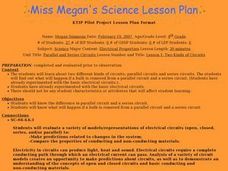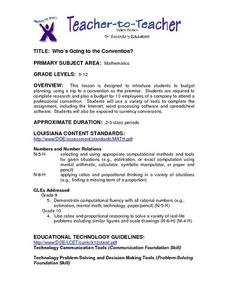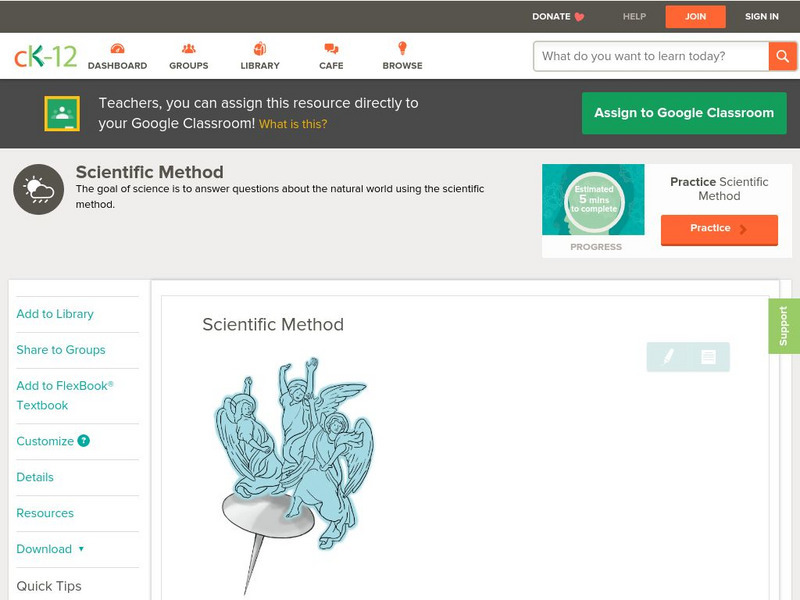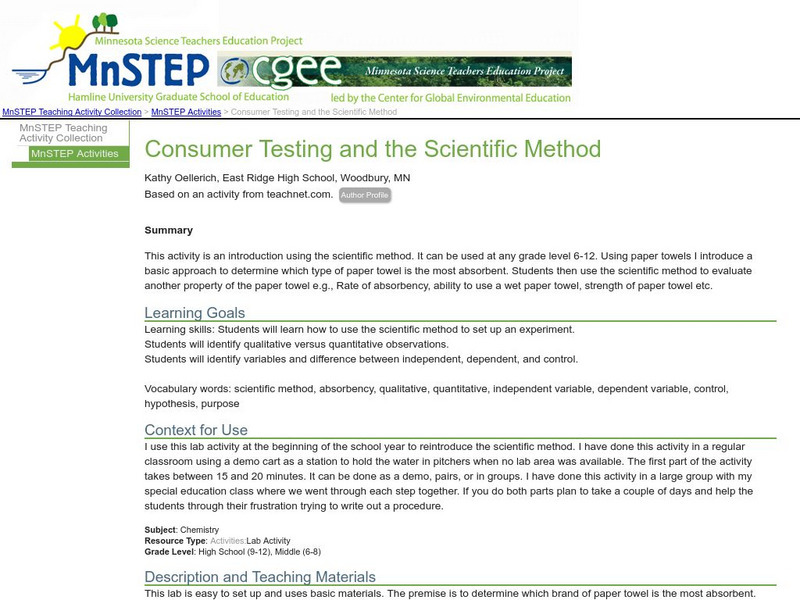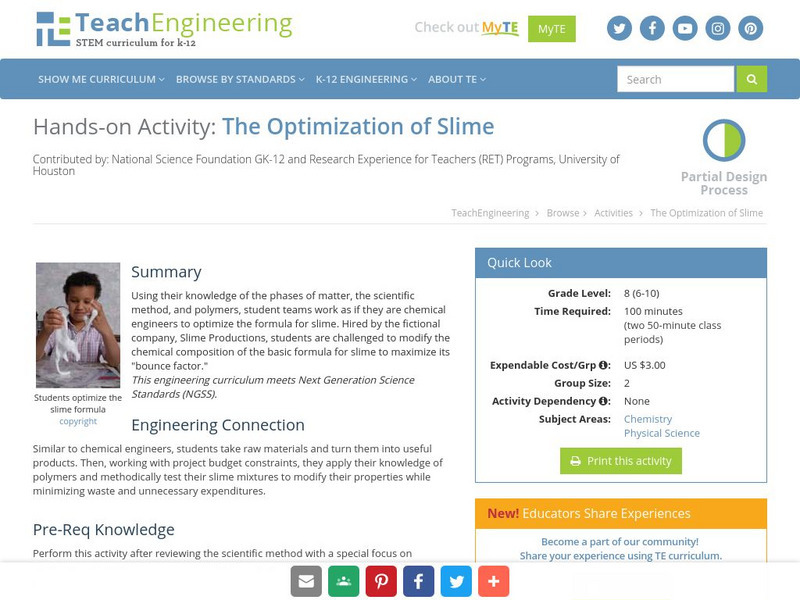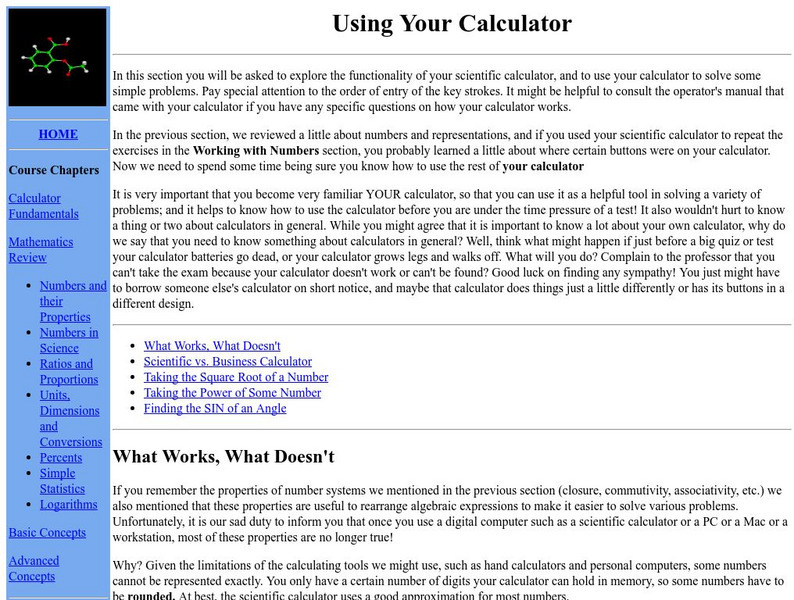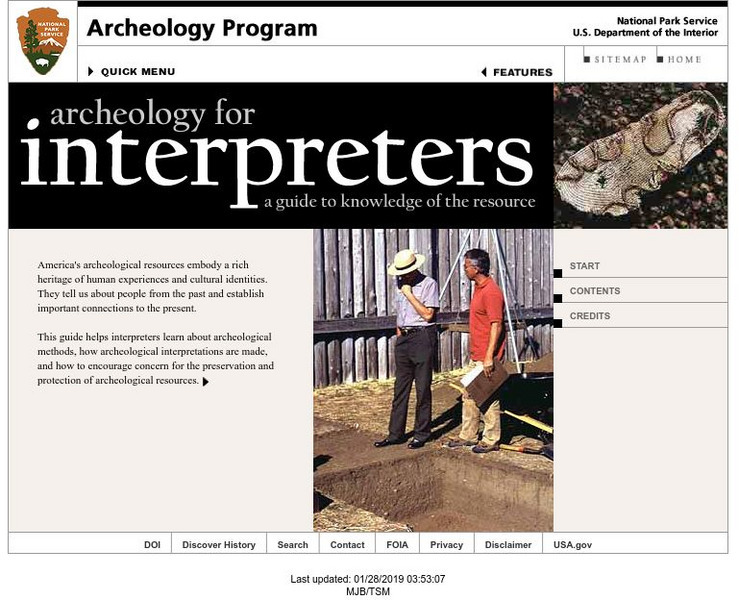Curated OER
Meterology -- Atmosphere
Fourth graders discover how weather predictions are made. They list the responsibilities of a meteorologist. They identify weather instruments and state their functions.
Curated OER
Observation
Students practice observation skills by discussing physical attributes of family artifacts. They determine what characteristics of an object are considered important details.
Curated OER
Two Kinds of Circuits
Fourth graders examine parallel and series ciruits. They experiment what happens if a bulb is removed from both a parallel and series circuit. They understand the differences between parallel and series ciruits,
Curated OER
Mixed Expressions and Complex Fractions
Students are introduced to mixed expressions and complex fractions. They work through several problems with the instructor and then complete a worksheet.
Curated OER
Comparing Weather Conditions
Students conduct research on temperature, wind speed and weather conditions from a variety of areas. They organize their findings on worksheets and spreadsheets and discuss various examples of databases.
Curated OER
Before We Travel, We Research
Young scholars conduct research on a historical site in preparation for a field trip. In small groups, they conduct research, and present the information to the class in the form of a PowerPoint presentation or poster.
Curated OER
Blood Business
Young scholars identify the different kinds of blood. In this biology lesson, students investigate the antigens, agglutinins and Rh factor using their own blood. They use Punnett squares to predict blood type of offspring.
Curated OER
Pottery Analysis
Students study how archaeologists analyze artifacts to answer questions about past cultures. They explain why pottery is important to archaeologists and how they use classification to answer their research questions.
Curated OER
Who's Going to the Convention?
Students practice planning budgets as they create a budget for ten employees of a company to attend a professional convention. They use the Internet, and spreadsheet software to complete their assignment.
CK-12 Foundation
Ck 12: Scientific Method (Basic)
[Free Registration/Login may be required to access all resource tools.] This is a basic introduction to the scientifice method that includes links to instructional videos, grade-level texts, interactive activities, and review materials.
City University of New York
Scientific Method and Probability: Interactive Activity
This interactive lesson begins with the basics and carries through to methods of data analysis, all interactively. Supporting material is excellent.
Science Education Resource Center at Carleton College
Serc: Consumer Testing and the Scientific Method
Using paper towels, introduce a basic approach to determine which type of paper towel is the most absorbent using the scientific method. Students learn to evaluate properties of paper towels: rate of absorbency, ability to use a wet...
CK-12 Foundation
Ck 12: Biology: Basics of Science Study Guide
This comprehensive study guide covers the key terms and basic concepts needed for an intro to science unit.
TeachEngineering
Teach Engineering: Heave Ho!
Students will discover the scientific basis for the use of inclined planes. They will explore, using a spring scale, a bag of rocks and an inclined plane, how dragging objects up a slope is easier than lifting them straight up into the...
National Center for Ecological Analysis and Synthesis, University of California Santa Barbara
Nceas: Scientific Method
This concise site from NCEAS contains an explanation of the scientific method along with a basic example of the scientific method in action.
National Institute of Educational Technologies and Teacher Training (Spain)
Ministerio De Educacion: El Metodo Cientifico
How scientists solve problems using the scientific method? This site provides a good basic overview of the scientific method.
Other
Gphsf: Basic Project Timeline
This resource is a short piece, part of a larger page, on conducting your experiment. It contains a lot of good advice.
TeachEngineering
Teach Engineering: The Optimization of Slime
Using their knowledge of the phases of matter, the scientific method, and polymers, student teams work as if they are chemical engineers to optimize the formula for slime. Hired by the fictional company, Slime Productions, students are...
Shodor Education Foundation
Shodor: Using Your Calculator
This site deals with using a calculator to help solve and evaluate mathematical problems. This site provides a lengthy chart of basic operations performed by calculators, examples of problems to be solved using a calculator, as well as...
Curated OER
National Park Service: Archaeology for Interpreters
The National Park Service provides a guide for new interpreters--that can also be readily understood by students--to learn archeological methods, how archeological interpretations are made, and how to encourage concern for the...
Alabama Learning Exchange
Alex: Bubble Bubble
This lesson will help young learners understand the shape and movement of bubbles. Students will predict, practice, and record results as they blow bubbles with different-shaped objects.
Science and Mathematics Initiative for Learning Enhancement (SMILE)
Smile: Magnet Muscles (Lesson Plan)
A teacher lesson plan which includes a station lab; students navigate through four stations with separate activities on magnetic principles. Easily adaptable as a student project.
TeachEngineering
Teach Engineering: Find It!
In this activity students will learn the basic concept of Global Positioning Systems (GPS) using triangulation and measurement on a small scale in the classroom. Students discover how GPS and navigation integrate mathematic and...




